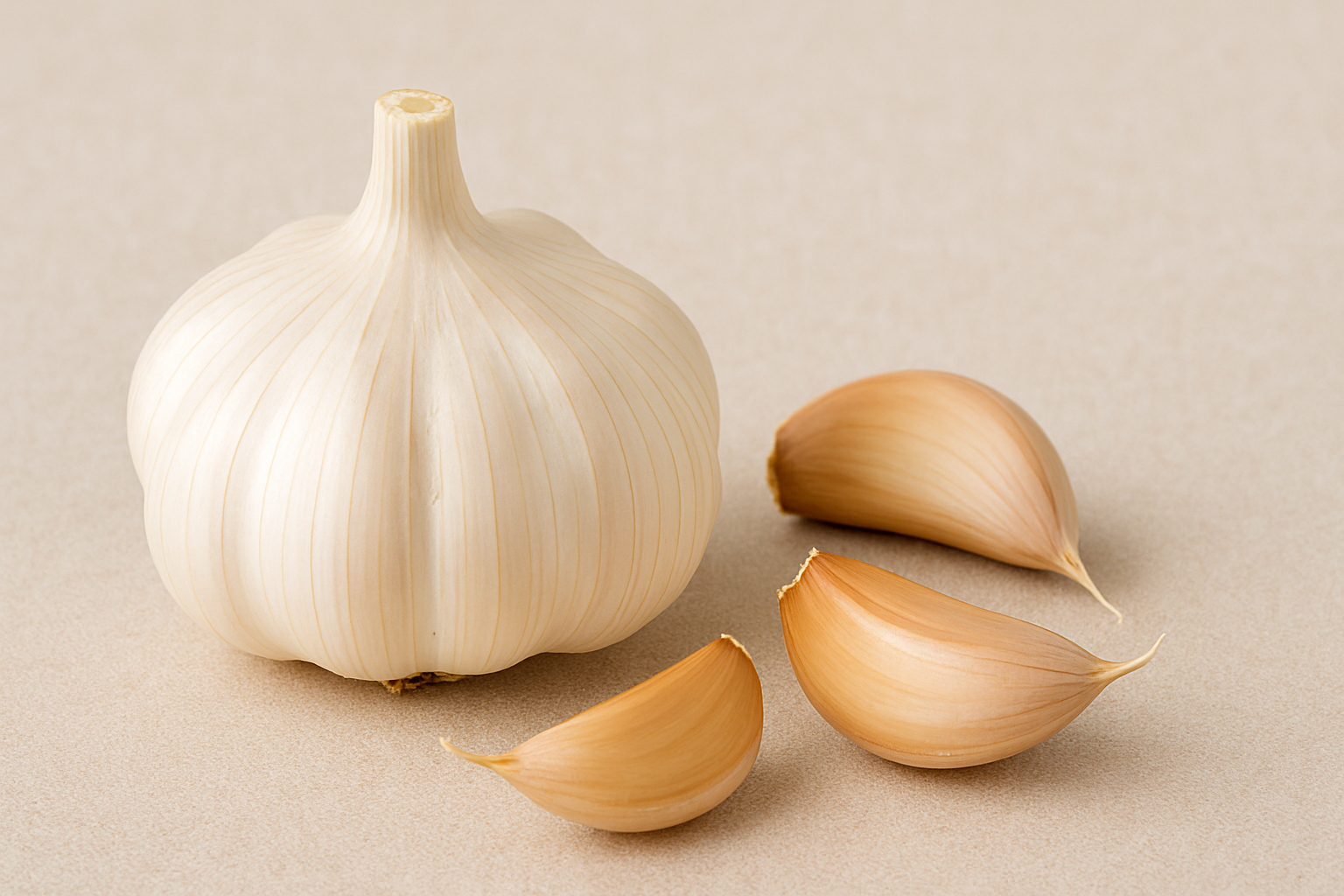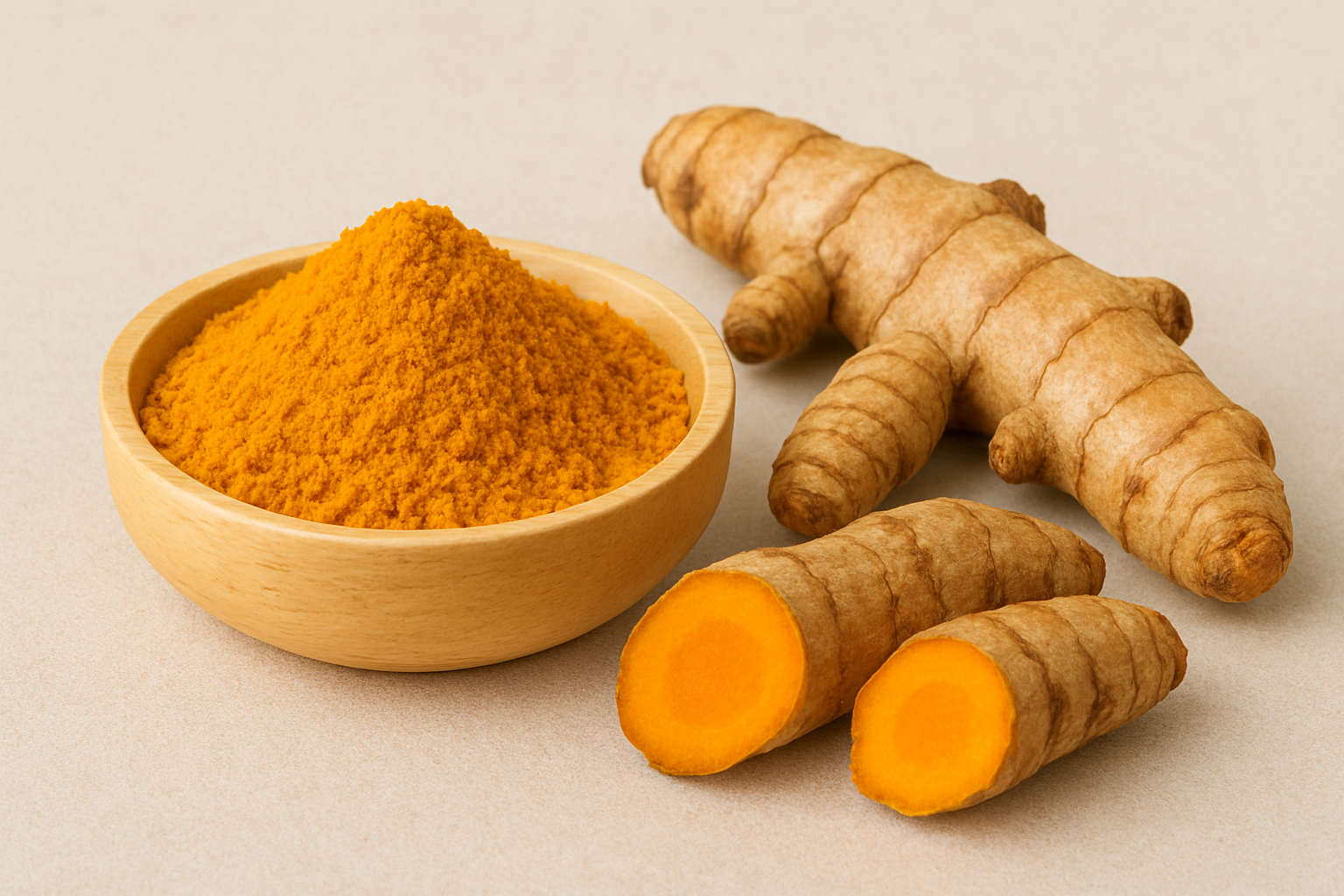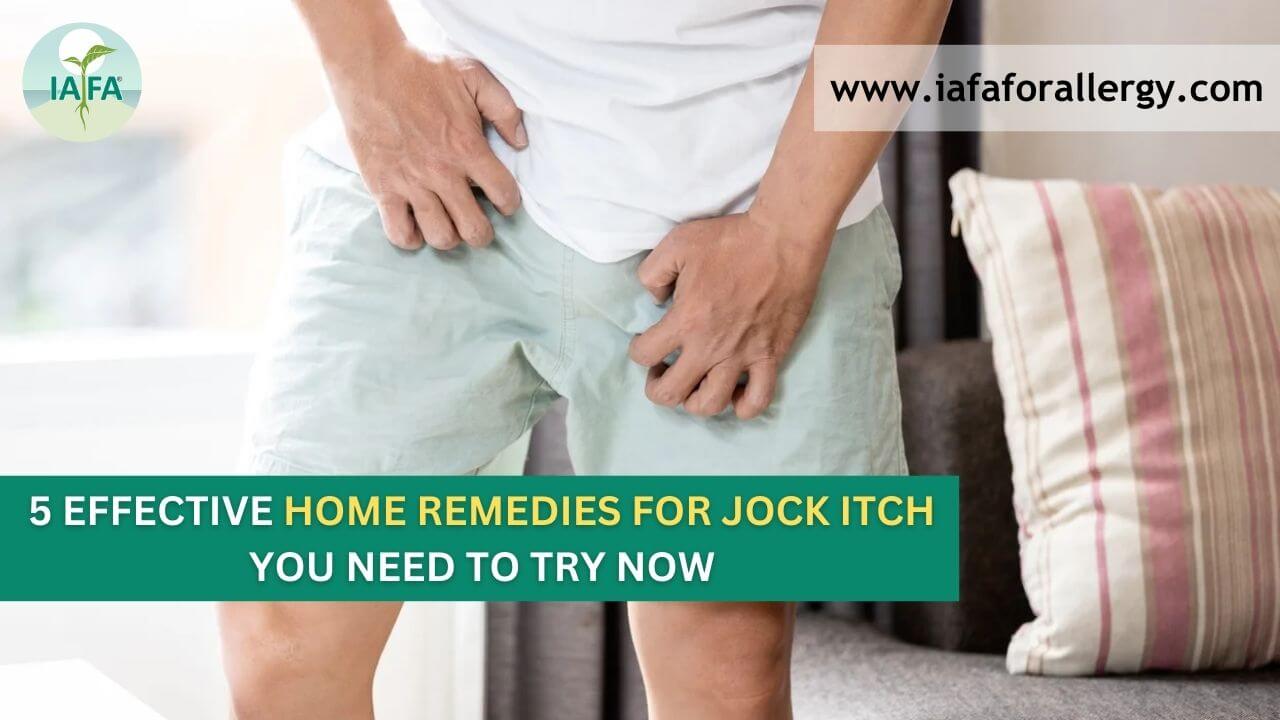Introduction
Anti-fungal drug treatments are available easily that can help to treat the Jock itch (Tinea cruris).
On the other hand, I suggest Ayurvedic/ home remedies for Jock Itch can be highly effective in alleviating symptoms and preventing the recurrence of disease. Jock itch home remedies are simple and effective and rely on traditional knowledge of Ayurveda with scientific validation.
Home Remedies for Jock Itch
The home remedies listed below are rich in anti-fungal and anti-bacterial characteristics, making them particularly useful for the Natural Treatment of Jock Itch:-
1. Garlic (Rasona, Lahsuna) For Jock Itch

Allium sativum (Garlic), which is locally known as Lahsuna, exhibits strong anti-fungal properties and is therefore considered an ideal home remedy for Jock Itch.
Recent research revealed that Garlic contains various organosulfur compounds like allicin, ajoene, saponins, and phenolic compounds, because of which it exhibits anti-fungal activity and gives the best result in Jock itch.
How Garlic Works on Jock Itch?
Allicin is the prominent antifungal compound in garlic. Allicin is formed when garlic is chopped or crushed. Allicin disrupts fungal cell membranes by inhibiting lipid synthesis, leading to cell death.
How to Use Garlic for Jock Itch?
Garlic is crushed and it is mixed with Coconut oil (Nariyal Taila) and a paste (Lepa) is formed). This paste should be applied for 10- 20 minutes and then washed off.
2. Coconut Oil For Jock Itch(Narikela Taila, Nariyala Taila)

Cocos nucifera (Narikela) is widely famous for treating various skin disorders especially fungal disorders like Jock itch (Tinea infection).
Recent research revealed that Coconut oil, especially coconut virgin oil, consists of fatty acids like acrylic acid, lauric acid, and cupric acid that are promising natural anti-fungal agents and helps to treat Jock itch.
How Coconut Oil Works on Jock Itch?
The fatty acids like lauric acid, and cupric acid, damage the membranes of the fungal cells.
The antioxidants present in the coconut oil weaken the defense of fungal cells. The low pH and moisture capacity of coconut oil also help to prevent the growth of fungal cells hence helping in treating conditions like Jock Itch.
How to Use Coconut Oil for Jock Itch?
- After proper cleaning and drying of the affected area of the Jock Itch, virgin coconut oil can be applied directly to that area.
- You can also make a paste of coconut oil mixed with crushed garlic and apply on the affected area.
3. Aloe Vera For Jock Itch

Aloe barbadensis or aloe vera has various active ingredients that gives various pharmacological properties to it – like anti-fungal, and antimicrobial activity.
A recent study has revealed that Aloe vera consists of anthraquinones like emodin, aloin, phenolic compounds like tannins, flavonoids, polysaccharides like acemannan, saponins, and salicylic acid. This makes aloe vera an excellent choice to use in Jock Itch. It also has Vitamin C, Vitamin E, Zinc, etc. which support antifungal mechanisms.
How Aloe Vera Works on Jock Itch?
Aloe Vera inhibits fungal proteins and enzyme synthesis and induces oxidative stress on fungal cells which leads to disruption of fungal cell walls and membranes. In this way, it helps to treat fungal skin problems and jock itch.
How to Use Aloe Vera for Jock Itch?
- For getting excellent results it’s better to prepare fresh aloe vera gel. For that one can get fresh aloe vera leaf, wash it properly, and ensure that it is free from the yellow latex which may irritate the skin.
- Clean and dry the affected area of the Jock itch and apply the aloe vera gel freshly prepared directed on it. Repeat this application at least before bedtime and after bathing to get good results.
- One can also add virgin coconut oil, or tea tree oil to enhance the effect of this home remedy.
4. Turmeric For Jock Itch(Haridra, Haldi)

Curcuma longa famous as turmeric or Haldi is considered the best anti-inflammatory, anti-fungal, and antibacterial agent making it the best home remedy to use for jock itch.
Recent studies have revealed that turmeric consists of key components like curcuminoids (curcumin), essential oils, polysaccharides, phenolic compounds, minerals, and flavonoids, which exhibit strong anti-fungal properties and make it an ideal home remedy for Jock itch.
How Turmeric Works on Jock Itch?
The key compounds present in it like curcumin inhibits hyphal growth and interferes with the fungal enzymes system leading to cell death. Its essential oils like turmerone, cineole, etc. inhibits fungal spore germination and hence inhibits colonization. Turmeric also acts as antifungal by inhibiting the formation of fungal biofilms.
How to Use Turmeric for Jock Itch?
- Turmeric with coconut oil – Mix 1 teaspoon of turmeric with a few drops of coconut oil. If coconut oil is not available, you can use water. Clean and dry the jock itch affected area and apply the paste formed with turmeric and coconut oil. Leave it for approximately 30 minutes and rinse it with lukewarm water and dry it. You can again apply coconut oil over it and leave it as it is. Repeat this at least two times a day to get better results.
- Turmeric along with Aloe Vera – Paste should be formed by adding 1 teaspoon of turmeric in the freshly prepared aloe vera gel and can be directly applied over the affected area after proper cleaning and drying. Leave the paste for 30 minutes and then wash and dry.
- Turmeric with honey (Madhu) – A paste prepared by mixing one tablespoon of turmeric and honey which is then applied over the affected area.
- A pinch of turmeric powder along with one cup of milk daily provides internal support to treat jock itch. You can also take tea prepared by adding one-fourth spoonful of turmeric and black pepper which not only helps to treat fungal infection jock itch but also boost immunity.
Also Read:- Say Goodbye to Fungal Infections: Powerful Ayurvedic Treatment You Need to Try
5. Neem Oil For Jock Itch(Nimba)

Azadirachta indica (Neem or Nimba) is known to treat various disorders, including Jock itch.
A recent study has revealed that Neem has various bioactive compounds like Nimbin, nimbidin, Gedunin, azadirachtin, terpenoids, and salannin which help combat fungal infection of Jock itch.
How Neem Works on Jock Itch?
Neem (key compound like Azadirachtin) inhibits fungal spore formation and disrupts and destabilizes fungal cell wall integrity.
Geducin present in it induces oxidative stress on fungal cells and inhibits their growth. The oil present in Neem is rich in beta caryophyllene which exhibits excellent antifungal activity.
How to Use Neem for Jock Itch?
- Neem Bath – Take fresh Neem leaves or Neem powder. Boil them in water for 10- 15 minutes. This neem-infused water can be applied to the affected area or a Neem bath can be taken. Dry the affected area. Bathing gives the best results when taken in the evening.
- Neem Paste – Fresh Neem leaves should be taken. Grind them with water to form a smooth paste and apply over the affected area after proper cleaning and drying. Leave it for 30 minutes, rinse with lukewarm (Sakoshan Jala), and pat dry. Repeat this process two times a day.
Neem oil alone or with a carrier oil like coconut oil should be gently massaged over the affected area during the night and washed off in the morning to get the best result in Jock itch.
Jock Itch Ayurvedic Treatment
Ayurvedic Medicine for Jock Itch
In Ayurveda, the treatment for conditions like jock itch (a type of Kushta Roga) involves Shodhana (purification therapy) along with Shamana (pacificatory therapy). According to the Ayurvedic Acharyas, both therapies are considered the best Ayurvedic medicine for jock itch, which is the most effective approach for managing skin disorders.
Shodhana: Detoxification or cleansing procedures like Vamana, Virechana, Raktamokshana (used depending on doshic involvement).
Shamana: Use of internal medicines, herbs, oils, and diet/lifestyle to balance doshas and calm symptoms.
NOTE: if you still face any difficulty, consult an Ayurvedic doctor before taking any treatment.

Conclusion
The home remedies mentioned above are highly effective in the management of fungal infections like Jock Itch. If you cannot source the home remedies mentioned above, feel free to contact the IAFA team for assistance.
For more information and personalized treatment of Jock Itch, you can also consult Dr. Sahil Gupta for expert guidance.
Frequently Asked Questions (FAQs)
Q1. Can the Home Remedies Mention Above Effectively Treat Jock Itch?
Ans. Yes, as all research proved Ayurvedic herbs can treat mild to moderate cases of jock itch effectively. However severe cases may require consulting the doctor.
Q2. What are the top 10 Ayurvedic remedies for Jock Itch?
Ans. Various herbs and oils can be used to treat jock itch. The top 10 are Garlic, Coconut, Turmeric, Aloe vera, Neem, Tea tree, black walnut, Thuja, Myrrh, and oatmeal.
Q3. Are Home Remedies for Jock Itch Safe for Everyone?
Ans. A patch test is always necessary to perform in local application remedies to check allergic reactions. Consult your doctor before applying any home remedy if you have sensitive skin, are pregnant, breastfeeding, or have open wounds.
Q4. How Much Time Do Home Remedies Take to Work on Jock Itch?
Ans. Home remedies usually improve symptoms in 2 weeks. If symptoms worsen during this time or persist beyond this period, consult the doctor.
Q5. Can I Combine One or Two Home Remedies?
Ans. Yes, a few remedies can be combined for enhanced effect, but it is better to avoid overloading the skin with too many remedies.
Q6. When Should I See a Doctor for Jock Itch?
Ans. If symptoms persist or worsen with the home remedies, jock itch spreads to other areas, and severe pain or oozing starts then immediately consult the doctor.
Q7. How effective are Ayurvedic herbs like neem and turmeric for jock itch treatment?
Ans. Turmeric, clear the infection, stops the itching, and calms the skin. It is great at fighting fungus. Its main ingredient, curcumin, helps kill germs and reduce swelling. You can eat turmeric or make a paste with water and put it on the infected area.Neem not only clears the infection but also helps with itching and reduces redness. It fights fungus, viruses, and bacteria. You can use neem oil or soaps made with neem to treat fungal infections.
Q8. Why is balancing doshas important in Ayurveda jock itch treatment?
Ans. According to Ayurveda, fungal infections happen when the natural balance of the body’s energies (called doshas: Vata, Pitta, and Kapha) is disturbed. These infections are usually caused by too much Kapha and Pitta, which creates conditions in the body that allow fungus to grow. Hence balancing doshas is required.
Reference
- Rutuja R. Shah, Rohan R. Vakhariya. Formulation and Evaluation of Antifungal Soap of Garlic Oil. Asian J. Pharm. Res. 2020; 10 (1): 13- 16. doi: 10. 5958/ 2231- 5691. 2020. 00003. 9
- Chawla, Aakriti & Rastogi, Madhur & Gahalaut, Pratik & Dubey, Varsha & Mahajan, Vasvi & Deshmukh, Rahul. (2023). Comparing the Clinical Efficacy of Topical Application of Virgin Coconut Oil and 1% Clotrimazole Cream as an Adjuvant to Systemic Antifungal in Chronic Dermatophytosis: A Randomized Controlled Trial. Nepal Journal of Dermatology, Venereology & Leprology. 21. 14- 20. 10. 3126/ njdvl. v21i1. 47643.
- SALAZAR, Daniel & Hoyos, Rodrigo & Orozco-Sánchez, Fernando & Arango, Myrtha & Gomez Londoño, Luisa. (2015). Antifungal activity of neem (Azadirachta indica: Meliaceae) extracts against dermatophytes. Acta Biológica Colombiana. 20. 201- 207. 10. 15446/ abc. v20n3. 45225.
- Manipal, Sunayana & Shireen, Fazlia & Prabu, D. (2015). Antifungal activity of Aloe vera: In vitro study SRM Journal of Research in Dental Sciences. 6. 92. 10. 4103/ 0976- 433X. 155464.
- Jankasem M, Wuthi-Udomlert M, Gritsanapan W. Antidermatophytic Properties of Ar-Turmerone, Turmeric Oil, and Curcuma longa Preparations. ISRN Dermatol. 2013 Aug 26; 2013: 250597. doi: 10. 1155/ 2013/ 250597. PMID: 24066236; PMCID: PMC- 3770062.






